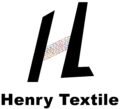In today’s fast-paced business world, choosing the right printing method can significantly impact your marketing efforts, brand image, and bottom line. Whether you’re producing marketing materials, product packaging, or promotional items, the decision to go digital or traditional is not always straightforward. Let’s explore the key differences between digital and traditional printing methods and help you decide which one best fits your needs.
What is Digital Printing?
Digital printing uses advanced technology to transfer images directly from a computer file to paper or other materials, eliminating the need for physical plates. This method is known for its speed and efficiency—ideal for short runs and last-minute projects. Some of the key benefits include:
- Fast Turnaround: Need materials urgently? Digital printing can deliver high-quality prints within hours, not days.
- Cost-Effective for Small Runs: Without expensive plate setups, printing small quantities is affordable.
- Customization: You can personalize each print with variable data, such as customer names or unique offers.
- Consistent Quality: Digital presses ensure the same quality and color consistency throughout the print run.
- Eco-Friendly: Produces less waste and uses fewer resources compared to traditional methods.
While digital printing is versatile, it’s not always the best option for large print runs or specialized finishes. But for quick, personalized, and environmentally conscious projects, it’s an excellent choice.
What is Traditional Printing?
Traditional or offset printing involves transferring ink from etched metal plates to paper using mechanical presses. This tried-and-true method has been around for decades and remains the go-to for many businesses, especially those with specific needs. Key benefits include:
- Unmatched Quality for Large Runs: For high-volume prints like magazines or catalogs, offset printing offers consistent, high-quality results.
- Cost-Effective for Bulk Orders: As print volumes increase, the cost per unit decreases.
- Specialty Finishes: Techniques like embossing, foil stamping, and Pantone color matching create premium, standout materials.
- Precision and Detail: Offset printing excels at producing fine details, crisp text, and rich colors.
However, traditional printing requires longer setup times, which can be costly for smaller runs or last-minute changes.
Cost Comparison: Digital vs. Traditional
Cost is a major factor when deciding between digital and traditional printing. Here’s a simple breakdown:
- Small Runs (100 Units): Digital printing is cheaper, costing around $200 for 100 brochures compared to $500 for traditional printing.
- Large Runs (10,000 Units): Traditional printing becomes more cost-effective, with the price per unit dropping significantly as volume increases.
Digital printing is great for smaller print runs, while traditional printing is more economical for large orders. But remember, other factors like waste, time, and flexibility also impact the overall cost.
Quality and Customization
When it comes to quality and customization, both methods have their strengths:
- Traditional Printing: Offers superior color accuracy, especially for larger volumes, and excels with fine lines and text clarity.
- Digital Printing: While digital presses have made leaps in color accuracy, they are particularly useful for highly personalized materials. Variable data printing allows businesses to customize each piece, which can boost engagement.
For high-end, luxurious finishes like metallic inks or embossing, traditional printing takes the lead. On the other hand, digital printing shines in flexibility, offering on-demand and quick-turnaround capabilities.
Turnaround Time and Flexibility
Need to make last-minute updates? Digital printing offers the fastest turnaround times, producing materials in just hours, perfect for businesses that require quick changes or updates. For instance, a real estate agency can create personalized brochures with specific properties for each potential client.
Traditional printing, however, involves longer setup times and might require new plates if changes are made during the print process, which can lead to delays and added costs.
Environmental Impact
In an era of growing environmental awareness, it’s important to consider the environmental impact of your printing methods. Digital printing often has the edge when it comes to reducing waste, as it allows businesses to print only what is needed.
Traditional printing, however, can still be more energy-efficient for large print runs. Modern offset presses now use eco-friendly inks and materials, reducing their environmental footprint.
Conclusion: Choosing the Right Printing Method
Ultimately, the best printing method depends on your specific needs, project type, and budget:
- Digital printing is ideal for short runs, quick turnarounds, and personalized materials.
- Traditional printing excels in quality, large runs, and specialty finishes.
As you make your decision, consider factors like quantity, customization needs, turnaround time, and sustainability goals. Whether you choose digital or traditional printing, the key is aligning your choice with your business objectives.
In the evolving world of printing, staying informed and making strategic decisions can help your business stand out in a crowded marketplace. The right printing method can elevate your brand and improve the impact of your printed materials.
